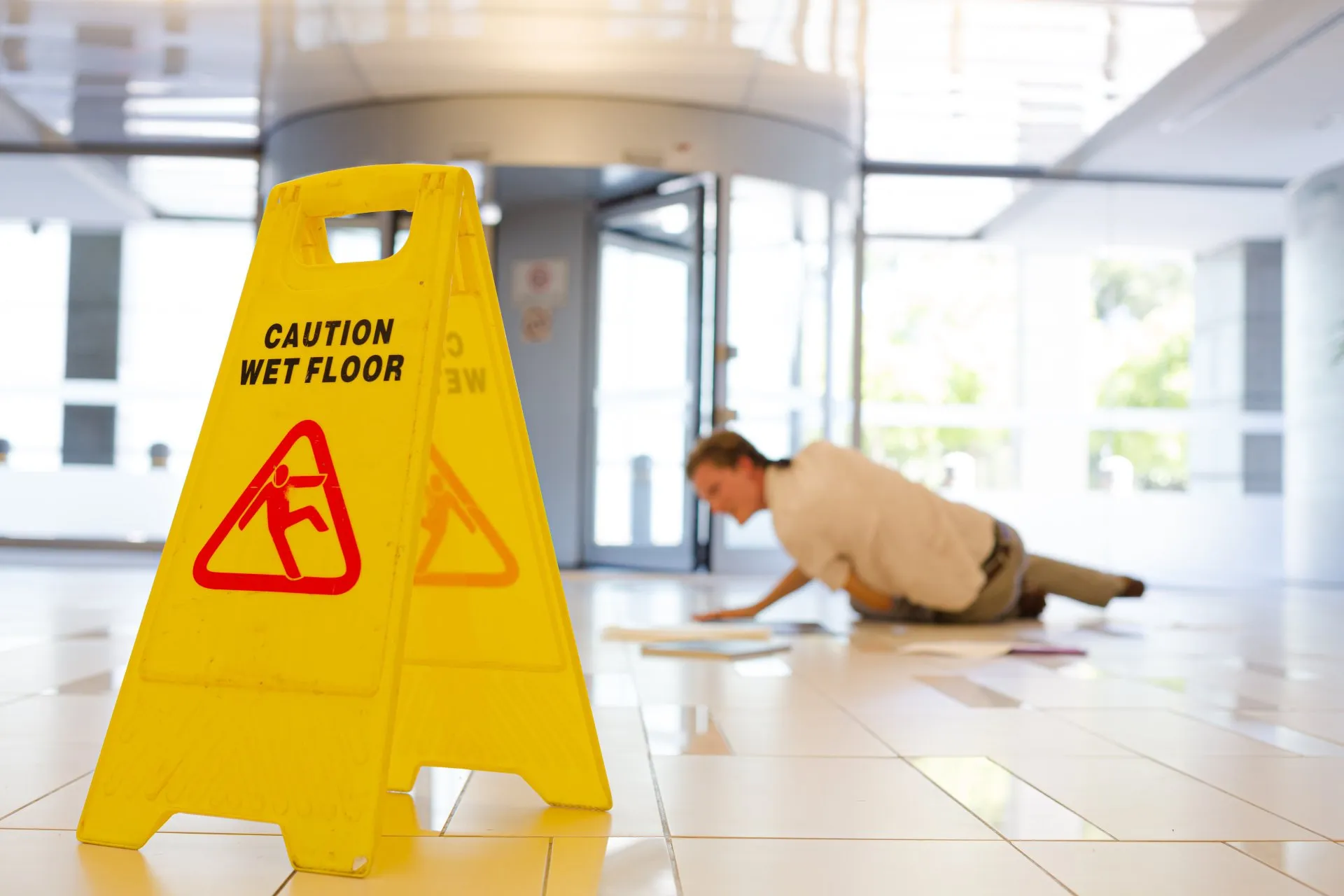
Providing documentation, like photographs or videos, that irrefutably shows you were injured by a hazard on someone else’s property is the best way to prove negligence in a slip and fall case.
Proving negligence isn’t always easy, especially if you don’t have much evidence to corroborate your version of events. Consult our reputable personal injury lawyers to find out if you have a case or to learn about your options for seeking compensation.
Elements of a Negligence Case
To prove negligence in a slip and fall case in Ohio, you have to prove four elements.
Duty
Proving duty involves establishing that a property or business owner owed you a duty of care. In the case of slip and fall injuries, a property owner has a legal responsibility to keep the property safe for legal visitors. The level of duty is assessed by the relationship between parties. Stores, for example, owe a high level of duty to ensure the safety of their customers.
Trespassers generally aren’t owed a duty of care, which is why a trespasser injured by a hazard might not be able to successfully win compensation in a slip and fall case.
Breach
A breach is when a property owner fails to uphold their duty of care. In the case of premises liability that means the premises was unsafe and they failed to correct the hazard or adequately warn visitors of the danger.
If there was a puddle in an aisle of a store, and the property owner knew about it, then they have arguably breached their duty to reasonably ensure your safety. The owner might take additional steps, like if they put out a wet floor sign, that might provide some liability cover despite the hazard.
Causation
The cause of your injury must be determined to be directly related to the breach of duty.
Damages
You will need to show proof of the damage that is directly related to your injury. Damages can be related to physical injuries or emotional trauma. You likely won’t be able to pursue a case if you have no provable damages. You might slip in a store due to negligence, but you can’t file a claim over your fall if you didn’t suffer any injuries or incur any monetary losses as a result.
Together, these elements create the foundation for proving negligence in a slip and fall case. They are important because they outline the responsibilities of both parties, which is key in determining fault.
Comparative Negligence Law in Ohio
When bringing your negligence claim, you may be met with the argument that you are at least partially responsible for your own injuries. Ohio’s comparative fault doctrine takes both the plaintiff’s and defendant’s fault into consideration.
Comparative negligence law is an assessment of each party’s culpability for the injuries and resulting damages. For example, if you slipped on a wet bathroom floor in a store, but likely wouldn’t have slipped had you not been checking yourself out in the mirror, you could be deemed partially responsible for your own injuries. Inattention of the injured person (e.g., looking at your phone when the fall happened) is one of the most common defenses used by Ohio property owners.
Comparative negligence is measured in percentages. If the total damages from slipping in the bathroom were $15,000 and you were deemed 20 percent at fault, your claim payout would be reduced to $12,000. The property owner would be liable for the $12,000 instead of the total amount.
In most cases, if the injured party is found to be more than 50 percent at fault, they cannot recover any damages.
Statute of Limitation for Filing Your Claim
In Ohio, you have two years from the accident date to file a claim. Connect with an experienced personal injury lawyer to determine if there are special circumstances that may extend the deadline for you.
Defenses Against Negligence Claims
In proving your case, you should be prepared for common defenses against negligence claims. The most common are comparative negligence and assumption of risk. Essentially, your own actions caused your injuries, or you were aware that injury was a possibility due to your participation in an activity or presence in a space.
Your claim may also be compromised simply because you don’t have the evidence necessary to prove your injury occurred on the property due to dangerous conditions. That’s why you should always report your injury to the property owner right away and take pictures of the hazard that injured you. Both an injury report and photo or video evidence will be vital in proving you were on the property when you were injured by a hazard that should not have been present.
The good news is you don’t have to go it alone. Our team at the Buckeye Law Group is prepared to support you while navigating your claim. We will work tirelessly on your behalf.
You Have a Right to Safety in Any Ohio Businesses or Property
Have you been injured in a slip and fall accident and need representation? Our Ohio personal injury attorneys are here for you. We understand it can be difficult to prove negligence in a slip and fall case. Our experienced team will investigate the situation thoroughly to uncover evidence that shows the property owner or business was responsible for your injuries and damages. Contact us today at 1-800-411-PAIN for free personal injury consultation.
Understanding Liability in Railroad Worker Accidents
Working on the railroad remains one of the most dangerous jobs in America. Between moving equipment, heavy machinery, and exposure to hazardous materials, the risk of injury is substantial. When
Legal Options for Victims of Red Light Accidents
Every driver knows that red means stop—but when someone chooses to ignore that basic rule, the results can be devastating. Red light accidents are among the most violent and deadly
Motorcycle Accident Claims: What Injured Riders Need to Know — Q&A with Buckeye Law Group
Q: Why are motorcycle accidents often more serious than car accidents?Motorcyclists are far more vulnerable on the road due to their lack of physical protection. When accidents happen, the injuries
Stroke Misdiagnosis: When Delay in Care Becomes a Life-Threatening Mistake
A stroke is one of the most urgent medical emergencies a person can experience. When recognized early and treated promptly, the damage caused by a stroke can be minimized or
Understanding Nerve Injuries Caused by Medical Malpractice: Q&A with Buckeye Law Group
Q: How serious are nerve injuries caused by medical negligence?Nerve injuries can be devastating—not just physically, but also emotionally and financially. They often lead to long-term disability, chronic pain, and
Why Running Red Lights Is One of the Deadliest Driving Behaviors
Every day, reckless drivers put lives at risk by running red lights. This dangerous driving behavior is responsible for thousands of serious injuries and fatalities each year. If you or
How Railroad Crossing Negligence Leads to Fatal Accidents
Railroad crossings are some of the most dangerous intersections on the road. When safety precautions fail due to negligence, tragic accidents can occur, often resulting in catastrophic injuries or fatalities.
Shoulder Dystocia: Birth Injury Risks and Legal Options
Shoulder dystocia is a serious birth complication that occurs when a baby’s shoulder becomes trapped behind the mother’s pelvic bone during delivery. This emergency situation can lead to nerve damage,
Medication Errors: Understanding the Risks and Legal Options
Medication errors are a serious issue in healthcare, causing thousands of injuries and deaths each year. Whether it’s a doctor prescribing the wrong drug, a pharmacist mislabeling a bottle, or
How Red Light Cameras Help Prevent Intersection Crashes
Intersections are some of the most dangerous areas on the road. Every year, thousands of accidents are caused by drivers who run red lights—often leading to serious injuries or fatalities.
